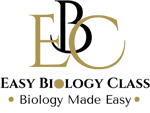B.Sc. DEGREE (C.B.C.S.S.) EXAMINATION, OCTOBER 2011
Fifth Semester
Core Course – ANGIOSPERM MORPHOLOGY, TAXONOMY AND ECONOMIC BOTANY
(Common for B.Sc. Botany Model I, Model II and Biotechnology – Double core)
Time: Three Hrs.; Maximum Weight: 25
Part A (Objective Type Questions)
Answer all questions
Each bunch of four questions carries a weight of 1 (4 X 1 = 4)
I. 1 – 4. Multiple choices:
1. Pappus is a modification of
a. Corolla
b. Calyx
c. Androecium
d. Gynoecium
2. Anthesis means:
a. Expansion of a flower from bud
b. Emergence of anthers from corolla tube
c. Dehiscence of anther
d. Opening of flower
3. Banana is an example for:
a. Drupe
b. Berry
c. Pepo
d. Legume
4. Example for phylogenic system of classification is:
a. Linnaeus system
b. De Candolles system
c. Engler and Prantl’s system
d. Bentham and Hooker’s System
II. 5 – 8. State whether the following statements are True or False:
5. Ragi is a millet
6. Tobacco is an insecticide yielding plant
7. Clerodendron belongs to family Verbenaceae
8. Leaves are gland dotted in Rutaceae
III. 9 – 12. Name the following:
9. Name the family with syngenecious anther.
10. Name a plant with racemose inflorescence.
11. Name the inflorescence in Amaranthus.
12. Name the family in which fruit is a hesperidium.
IV. 13 – 16. Fill in the blanks:
13. The alkaloid present in tea leaves is _____________.
14. Pineapple is an example for _________ fruit.
15. Spadix inflorescence is seen in _____________.
16. Binomial of mango is ________________.
Part B (Short answer questions)
Write short answers on any five of the following
Each question carries a weight of 1. (5 x 1 = 5)
17. Define epigyny.
18. Name one disinfectant used in herbarium.
19. What is obdiplostamenous condition?
20. Name one major herbaria
21. What is decendingly imbricate aestivation?
22. What is a staminode?
23. What is parietal placentation?
24. What is helicoid cyme?
Part C (Short essay/problem solving type)
Write Short Essays of the following, Answer any four questions,
Each question carries a weight of 2 (4 X 2 = 8)
25. What is the morphology of cotton?
26. Explain papilionaceous corolla.
27. What is spadix?
28. Mention the uses of Artocarpus as a source of Food.
29. Mention the economic importance of white damer.
30. Write notes on herbarium preparation.
Part D (Essay type)
Write essays of the following, Answer any two questions
Each question carries a weight of 4 (2 X 4 = 8)
31. Give an account of various dry dehiscent fruits with example.
32. Explain the floral characters of Euphorbiaceae
33. Give an account on the interdisciplinary approach in Taxonomy.

